Shelter is your first priority in any outdoor situation. Knowing how to properly pitch a tent means the difference between waking up dry and snug or in 4 inches of standing water. Start well by pitching your tent at home first. If you have trouble telling which pole is which, mark them with electrical tape or nail polish. Put a couple of extra nails or stakes into your kit, and make sure you have a hammer to pound them in and pry them out at camp.
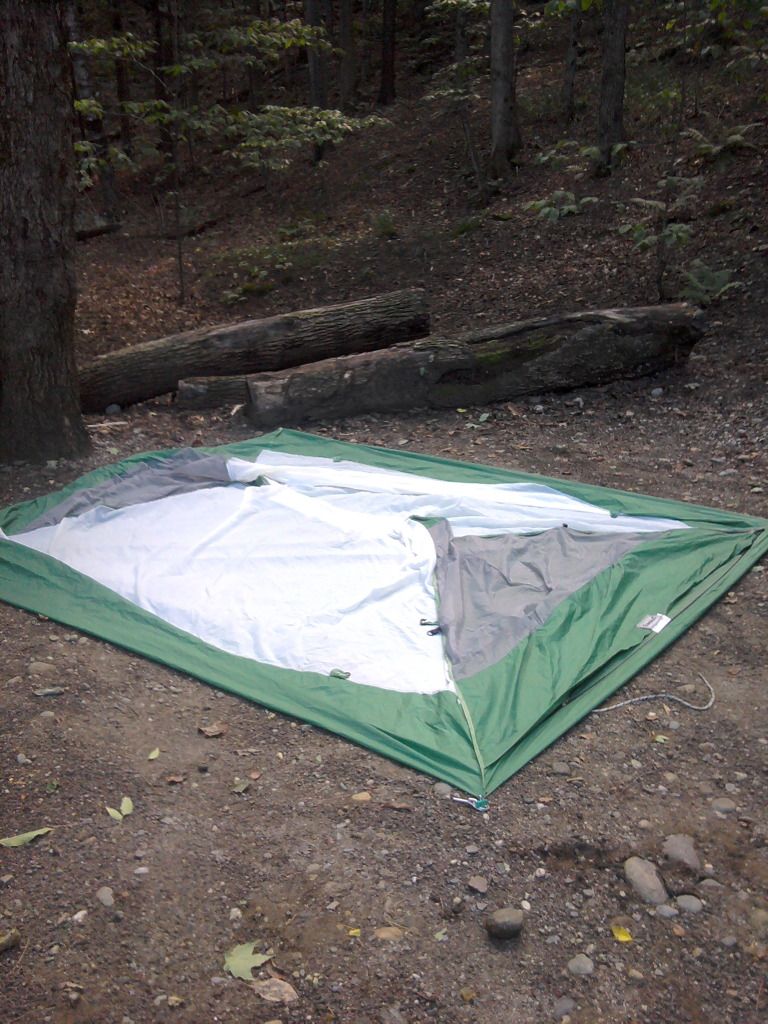 |
| Stake out the tent so the floor is taut and the ground sheet is completely covered. Double check that the door is where you want it before you pound in the stakes. |
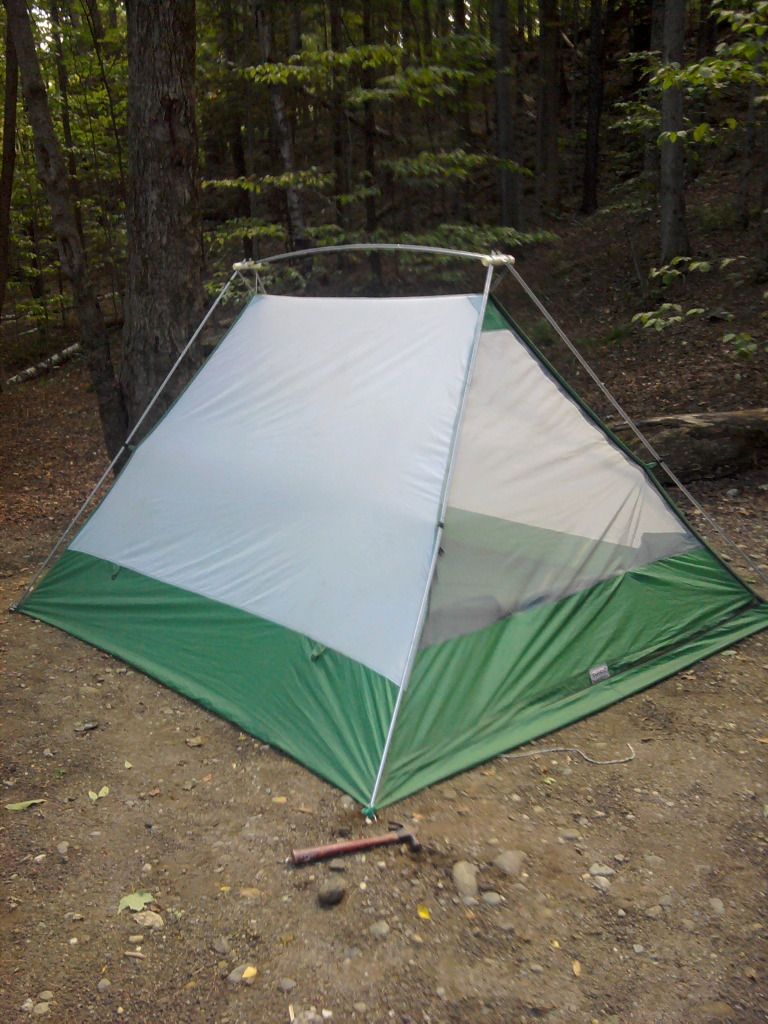 |
| Erect your tent according to the manufacturer's directions. Now is the time to make sure the gear loft or line is secure and pop an extra flashlight in the cargo pocket nearest the door. |
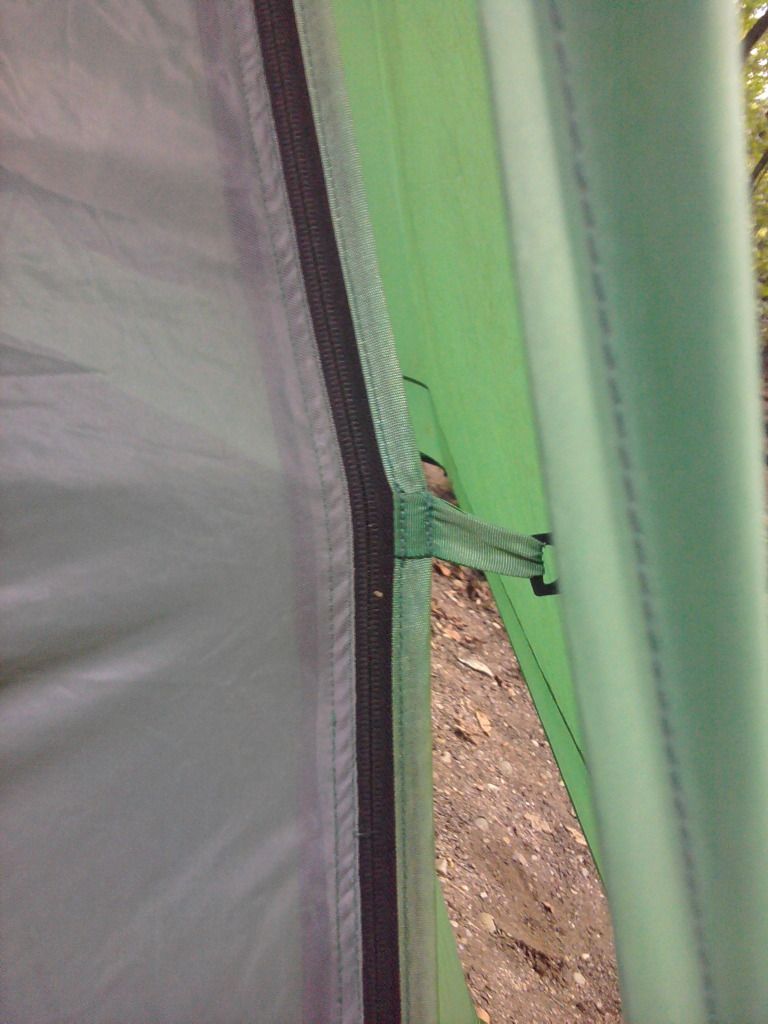 |
| A close-up showing the gap between the rainfly and the tent. |
Tentiquette 101
- No food, beverages, or flames in the tent. Period. If you have to have plain water, store it vertically in a cargo pocket where it can't accidentally spill and soak a sleeping bag. That little pack of m&m's you snuck in will draw skunks, raccoon, porcupines, squirrels, and possibly even bears.
- Enter the tent bum first, sit just inside the door and remove your shoes while your feet are still outside the tent.
- Don't enter another person's tent or sit or sleep on someone else's bag/pillow unless you've asked.
- Keep the door zipped to keep mosquitoes out.
- Don't run around the tents. If you trip on a guy line, you can hurt yourself and damage the tent beyond repair.
- A small whisk broom/pan should be included in the gear. Make one person responsible for sweeping out the tent each day. The little sticks and pebbles that find their way in quickly damage the floor.
Taking Down the Tent
Reverse the order, making sure to empty the cargo pockets and gear loft. Don't leave any stakes behind!
***As soon as you get home, hang your tent on a clothesline or in a dry attic to completely dry out before storage.***
Love you in"tents"ly,
Momma

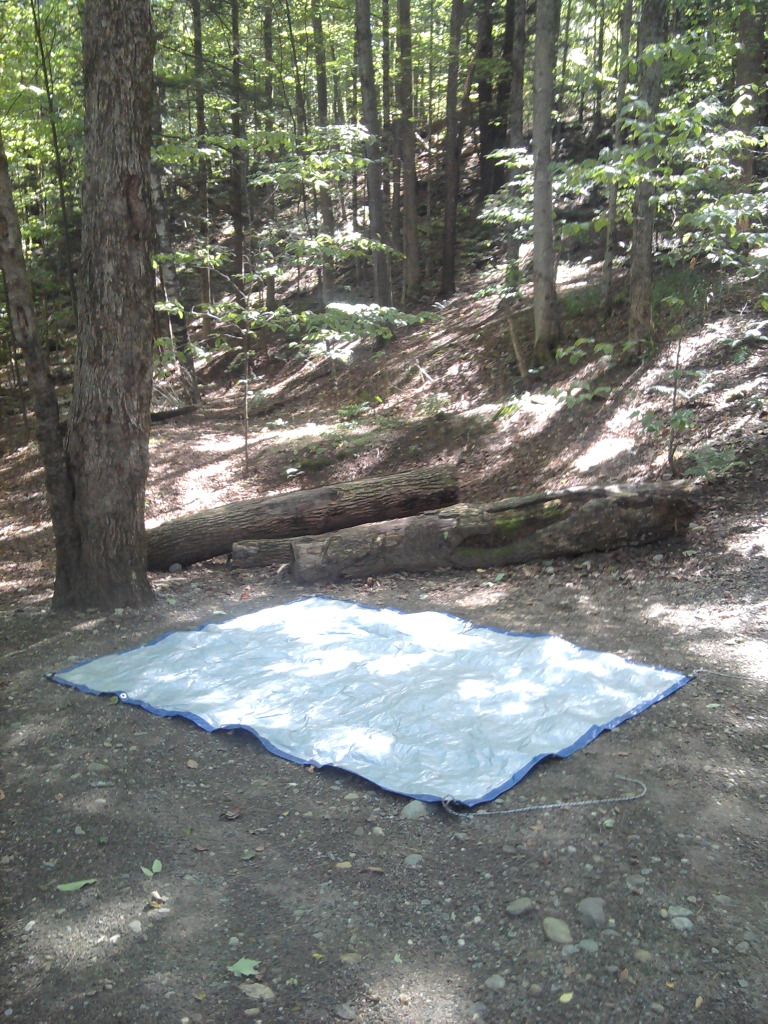
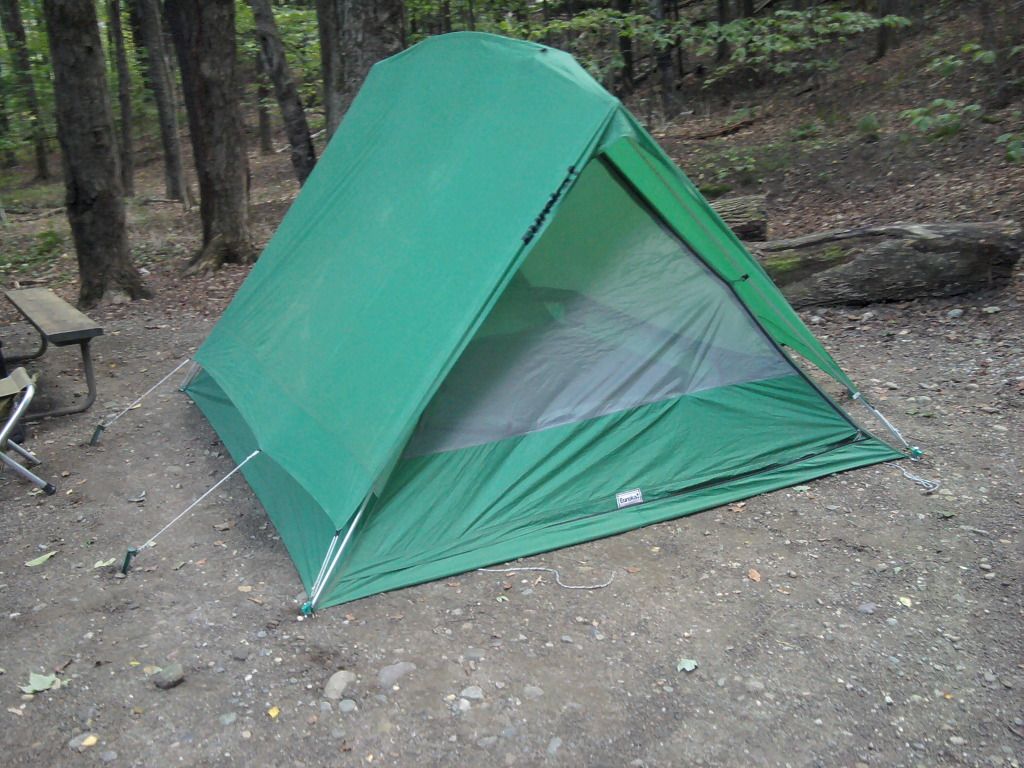
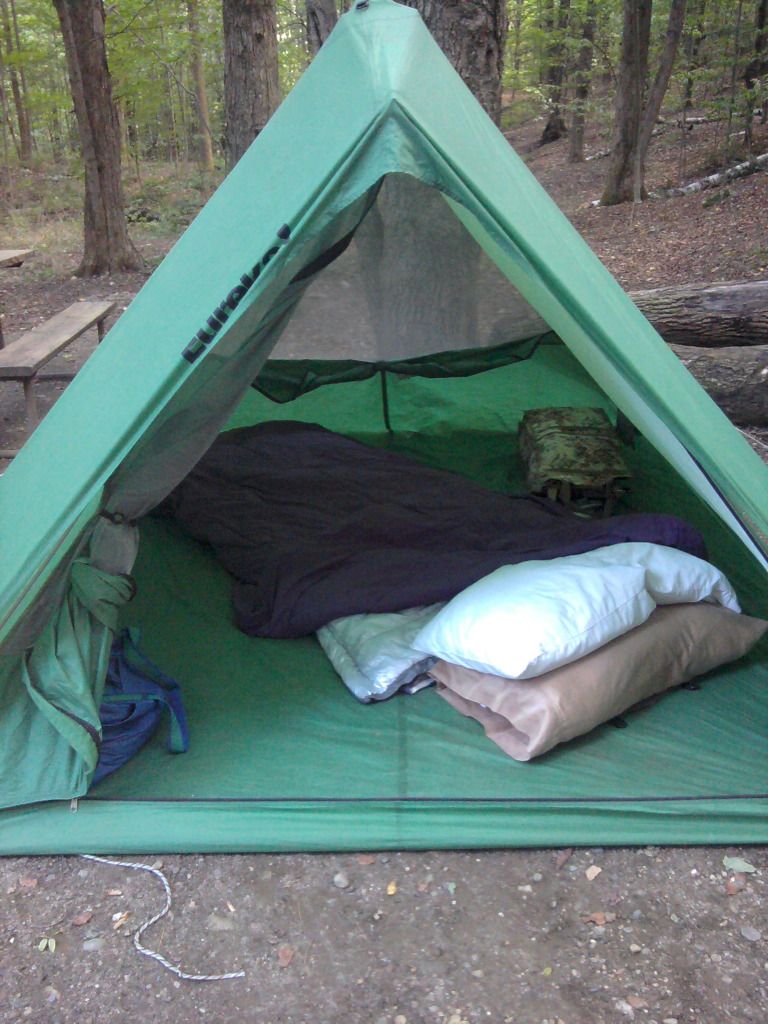


The saggy bit on the rain fly is where the gear or cooking annex is supposed to attach. With both the gear and cooking annex attached, this tent is virtually waterproof, even during the tail end of a tropical storm. (And yes, I learned that from experience!)
ReplyDeleteSo exciting! My family and several church families enjoy camping, but they all use different types of travel trailers. My husband and I would love to go camping with them more often without having to "bunk up" and crowd their space, but we didn't know the first thing about tent camping! This is very helpful. We've wondered if we ought to start saving up to purchase a little camping gear. How much would materials like this cost?
ReplyDeleteI would check Craig's List and the Classifieds first. It's not uncommon to find scout troops replacing gently used equipment. It may also be cheaper to rent a lean-to at the campground if they're available. Sleeping bags and other equipment are generally available at yard sales.
ReplyDeleteGood luck, and don't forget to pray: Nothing is too great for His power, and nothing is too small for His love :-)